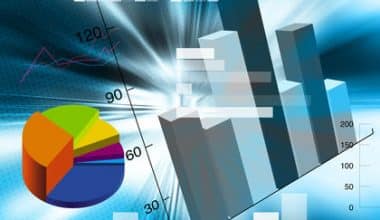IBM created the phrase “prescriptive analytics,” which is sometimes referred to as the “last frontier” of an analytics strategy. This article will take a deep dive into the definition, examples, advantages, and disadvantages of prescriptive analytics.
Making data-driven decisions is critical for business and marketing success, and prescriptive analytics uses computational sciences and math to help you take advantage of descriptive and predictive analytics. It goes beyond projections and suggests how your marketing decisions will be implemented. Basically, It does not only predicts what will happen and when it will happen but also answers the question “why will it happen?”—something marketers and businesses often ask.
Prescriptive Analytics Definition

Let’s take a step back to analyze the definition of descriptive and predictive analytics before moving on to prescriptive analytics. Descriptive analytics is a branch of statistics that examines historical data in order to generate information for further investigation. You can discover the reasons behind descriptive analytics successes and failures by employing data mining techniques. Predictive analytics is the process of combining historical data with algorithms to forecast outcomes.
Prescriptive analytics, on the other hand, is a sort of data analytics in which technology is used to assist businesses in making better decisions by analyzing raw data. Prescriptive analytics takes into account information about potential situations or scenarios, available resources, previous performance, and present performance to recommend a course of action or strategy. It can be used to make judgments throughout a wide range of time frames, from the immediate to the long term.
It is the polar opposite of descriptive analytics, which analyses decisions and results after they have occurred.
The Bigger Picture for Marketers and Businesses
Prescriptive analytics aids marketers in real-time campaign optimization. It enables marketers to make better-informed strategic decisions. Specialists can make faster optimization decisions and determine what will perform best for your brand, audience, and campaign goals because real-time data is available.
It assists you in making the most informed business decisions. It can also help you achieve business goals, such as increasing sales or lead generation or optimizing logistics and product deliveries.
How Does It Work?
Prescriptive analytics is based on artificial intelligence methods such as machine learning which allows for the processing of today’s massive amounts of data. And as new or extra data becomes available, computer programs automatically change to take advantage of it. This happens in a far faster and more complete manner than human capacities could handle.
It is related to predictive analytics, which involves the use of statistics and modeling to forecast future performance based on present and past data. However, it goes one step further; it advises a future route based on the predictive analytics’ forecast of what is likely to happen.
The Advantages and Disadvantages of Prescriptive Analytics
Prescriptive analytics cuts through the noise of current uncertainty and shifting circumstances. It also aids in the prevention of fraud, the reduction of risk, the increase of efficiency, the achievement of company objectives, and the development of more loyal customers.
This type of analytics, on the other hand, isn’t without flaws. Organizations can only be effective if they know what questions to ask and how to respond to the answers. The output findings will not be accurate if the input assumptions are incorrect.
When applied correctly, however, prescriptive analytics can assist organizations in making judgments based on thoroughly researched data rather than rash ones based on intuition. It can also simulate and display the probability of various outcomes, allowing firms to better grasp the level of risk and uncertainty they face than relying on averages. Furthermore, worst-case scenarios can be predicted more accurately, allowing businesses to plan accordingly.
Other Benefits of Prescriptive Analytics in Business
If you’re a senior executive, you’re continually thinking about how to improve the efficiency and performance of your company’s operations. Prescriptive analytics is the most obvious and efficient technique for scaffolding business intelligence in any organization. The following are some of its benefits;
Read Also: PLM Tools: Top Product Management Tools List in 2023
#1. Creates an easy-to-follow path to success
Prescriptive analytic models are created by combining data and operations to create a roadmap that tells you exactly what to do and how to do it correctly the first time. Artificial intelligence takes over business intelligence by simulating events in a situation and generating the steps required to avoid failure or achieve success.
#2. Provides Information on Real-Time and Long-Term Business Operations
Decision-makers may see both real-time and forecasted data at the same time to make decisions that support long-term success and growth. This simplifies decision-making by providing specific suggestions.
#3. Reduces your time spent thinking and increases your time spent accomplishing
Your team would spend less time finding problems and more time building excellent solutions thanks to the quick turnaround of data analysis and outcome prediction. Artificial intelligence can collect and process data faster and more efficiently than your team of data engineers.
#4. Reduce the possibility of human error or bias
Predictive analytics provides a more extensive and accurate kind of data collection and analysis than descriptive analytics, predictive analytics, or even individuals, thanks to more complex algorithms and machine learning techniques.
Examples of Prescriptive Analytics
It can assist a variety of data-intensive organizations and government bodies, including those in the financial services and healthcare industries, where human error is costly.
For example, when a wildfire is blazing nearby, prescriptive analytics could be used to determine the best call of action. It could determine if a local fire department should force citizens to evacuate a specific region. It might also be used to anticipate if an article on a specific topic would be popular with readers on the basis of data from related searches and social sharing. Another application could be to change a worker training program in real-time based on how each lesson is received.
#1. Hospitals and Clinics
It can also be utilized by hospitals and clinics to improve patient outcomes. It contextualizes healthcare data to assess the cost-effectiveness of various operations and therapies. This includes the luxury of assessing official clinical methodologies. It can also be used to determine which hospital patients are at the highest risk of re-admission. With this information, healthcare staff can do more to prevent frequent visits to the hospital or emergency room through patient education and doctor follow-up.
#2. Airlines
Assume you are the CEO of an airline and your goal is to maximize revenues. Prescriptive analytics can assist you in accomplishing this by automatically altering ticket prices and availability based on a variety of criteria such as; client demand, weather, and gasoline prices. When the computer detects that pre-Christmas ticket sales from Los Angeles to New York are lagging behind last year’s, it can automatically cut prices while ensuring that they do not fall too low due to this year’s higher oil prices.
At the same time, if the algorithm determines that demand for tickets from St. Louis to Chicago is higher than usual due to icy road conditions, it can automatically hike ticket costs. A computer software can accomplish all of this and more—and at a faster speed, too—instead of the CEO staring at a computer all day looking at what’s going on with ticket sales and market circumstances and then instructing people to log into the system and manually modify the rates.
Real-World Examples of Prescriptive Analytics
Prescriptive analytics isn’t merely a fad or a catchphrase. It is also not an inaccessible resource for non-enterprise organizations. Learn some examples of companies that use perceptive analytics. According to online surveys, the companies below use insights from this analytics to improve processes and customer experiences.
#1. Better patient care is provided by CenterLight Healthcare
When it comes to patient care and scheduling, CenterLight leverages prescriptive analytics to eliminate the element of surprise. Prescriptive analytics basically assists CenterLight in determining the optimal times to plan treatments and check-up sessions. This is to avoid overburdening their patients while still maintaining their safety and wellness. When setbacks or surprises occur, prescriptive analytics allows CenterLight to be just as proactive as their patients.
#2. SideTrade Anticipates Payment Behavior
To gain a better knowledge of a client’s genuine payment habits, SideTrade uses prescriptive analytics. It can rate clients on the basis of their payment history using prescriptive analytics. Hence, SideTrade and its clients will be able to better account for costly payment delays as a result of this increased transparency and accuracy.
Prescriptive Analytics is made up of scientific disciplines
- Computer-assisted learning
- Processing of natural language
- Computer Insights
- Signal and image processing
- Statistical and mathematical analysis
- Research into operations
Each discipline exists alone and serves a particular purpose, but prescriptive analytics comes to life when they are integrated to produce an output (a business decision). This is how it responds to the question of how we can make something happen.
What Are Prescriptive Analytics Techniques?
Prescriptive analytics employs a variety of techniques and tools, including business rules, algorithms, machine learning (ML), and computational modeling procedures. These techniques are used on data from a variety of sources, including historical and transactional data, real-time data feeds, and big data.
What Is an Example of Prescriptive Analytics?
A manufacturing company, for example, could rely on more than just company data. It could use historical and customer industry trends and predictions, as well as general economic predictive analytics. Every day, the cloud’s power propels prescriptive analytics into new and exciting directions.
AI Prescriptive Analytics?
Prescriptive analytics is based on artificial intelligence, specifically machine learning, which consists of algorithms and models that allow computers to make decisions based on statistical data relationships and patterns.
What Is Prescriptive vs Predictive Analytics?
Based on the data you collect, predictive and prescriptive analytics help you plan your business strategies. Predictive analytics tells you what might happen in the future, and prescriptive analytics helps you come up with specific suggestions.
What Is Prescriptive and Descriptive Analytics?
Businesses use three types of analytics to help them make decisions: descriptive analytics, which tell us what has already happened, predictive analytics, which show us what could happen, and prescriptive analytics, which tell us what should happen in the future.
How Does Netflix Use Prescriptive Analytics?
Prescriptive analytics looks at what will happen in the future and how it will affect the present. It helps Netflix figure out what factors will affect customers’ decisions to buy. Then, this method is used to make suggestions about what to do.
How Does Amazon Use Prescriptive Analytics?
Amazon planned to do this by using machine learning (ML) to figure out what a customer is most likely to buy and when. It would then ship the item to the customer before the customer even bought it. Obviously, if they sent a customer something they had not bought or did not want, the customer would just refuse the package.
Conclusion
With the definition, examples, and benefits of prescriptive analytics out of the way, the next question obviously would be, how do you implement this? As a business owner, all you need do is contact your consultant and strategize how to make this happen. As a consultant or strategist, on the other hand, there are tons of tools to get you started in no time. This, however, will be covered in a different post.
But in the meantime, you can reach out in the comment section for any questions or contact us from our homepage.






